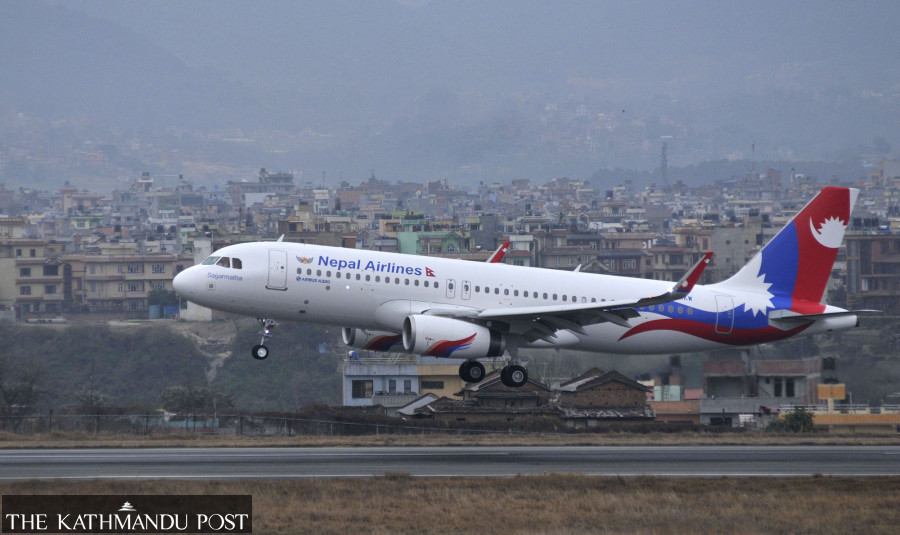Editorial
NAC-ional shame
It is a matter of time before the inevitable question crops up: Why do we need this white elephant?
Flight delays lasting hours or even days have become the unfortunate norm for anyone flying with an aircraft of the Nepal Airlines Corporation (NAC), the country’s national flag carrier. On Saturday, for instance, its ‘Sagarmatha’ narrow-body aircraft flew from Delhi after a 19-hour delay due to oil filter issues, while the ‘Lumbini’ experienced a three-hour delay after its computer system malfunctioned en route to Dubai. Meanwhile, the wide-body ‘Annapurna’ has been grounded at the Tribhuvan International Airport since last Thursday due to engine trouble, while another wide-body, ‘Makalu’, is undergoing maintenance in Italy. These incidents have left countless passengers stranded at airports, both at home and abroad.
Technical disruptions are nothing new to Nepal Airlines, but these recent problems have compounded the carrier’s woes. Such failures have inconvenienced passengers, raised concerns about their safety, tarnished the corporation’s image and burdened it with huge losses. For instance, a high-profit route like Kathmandu-Narita (Japan) has been disrupted, which would otherwise have brought in around Rs20 million for the airlines on normal days. Moreover, due to the grounding of the Makalu aircraft in Italy, the airlines is losing Rs20 million daily in its business. It also has the added burden of accommodating passengers whose flights were delayed and whose tickets to connecting flights had to be rebooked at exorbitant prices. If this state of affairs continues, it is only a matter of time before the inevitable question arises: Why do we need this white elephant of an organisation?
The problems don’t end with technical issues. As concerning is the Civil Aviation Authority of Nepal’s (CAAN) dereliction of duty, which has pushed Nepal further back on the EU Air Safety List. Nepal’s airlines don’t meet international safety standards and are therefore barred from European skies. The European Council’s long-standing concern has been over the CAAN’s failure to “enhance the safety of flyers”. Nepal’s civil aviation body still plays the dual roles of regulator and service provider. Lack of safety is bad for business too. Aviation experts say safety concerns are one reason Australia is yet to approve the landing of Nepali carriers on its soil. Again, if the airlines cannot reliably operate on these potentially lucrative routes, what is the point of having an international airliner operator?
The UN’s International Civil Aviation Organisation and other aviation watchdogs have called for a complete overhaul of CAAN, recommending that it be split into two entities. Political manoeuvring, however, is halting the passage of the CAAN reform bill that is currently stuck in Parliament. Meanwhile, the top management of Nepal Airlines is engaged in an endless blame-game of who is responsible for its sorry plight.
It seems like our government stakeholders in aviation are simply uninterested in having safe skies or in increasing the quality of service of our national flag carrier. Nepal Airlines came into operation in 1958, two years before Thai Airways. The former is barely functional with a juddering fleet of six while the latter is thriving with a fleet-footed fleet of 79. This might not be an exact comparison. What we can say with more certainty is that for a remittance- and tourism-dependent economy, the path Nepal Airlines is charting leads to a dead end.




 8.12°C Kathmandu
8.12°C Kathmandu














